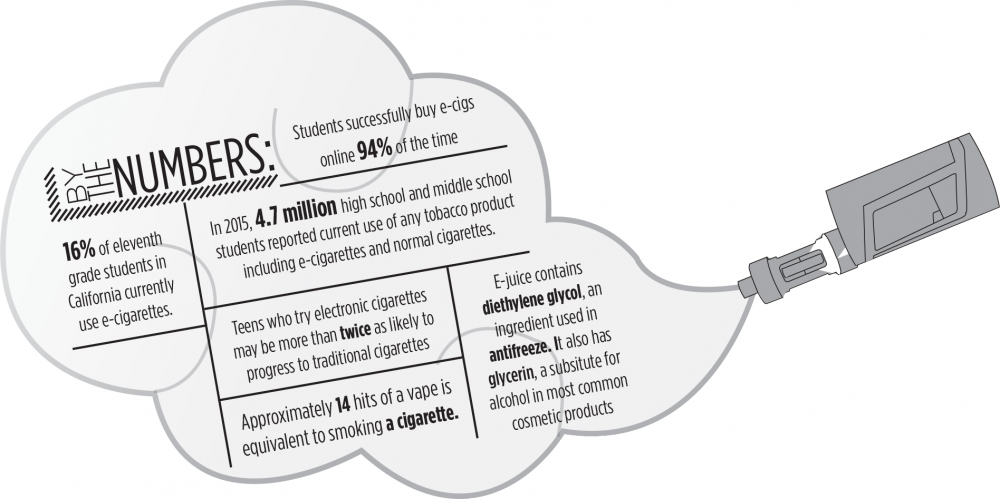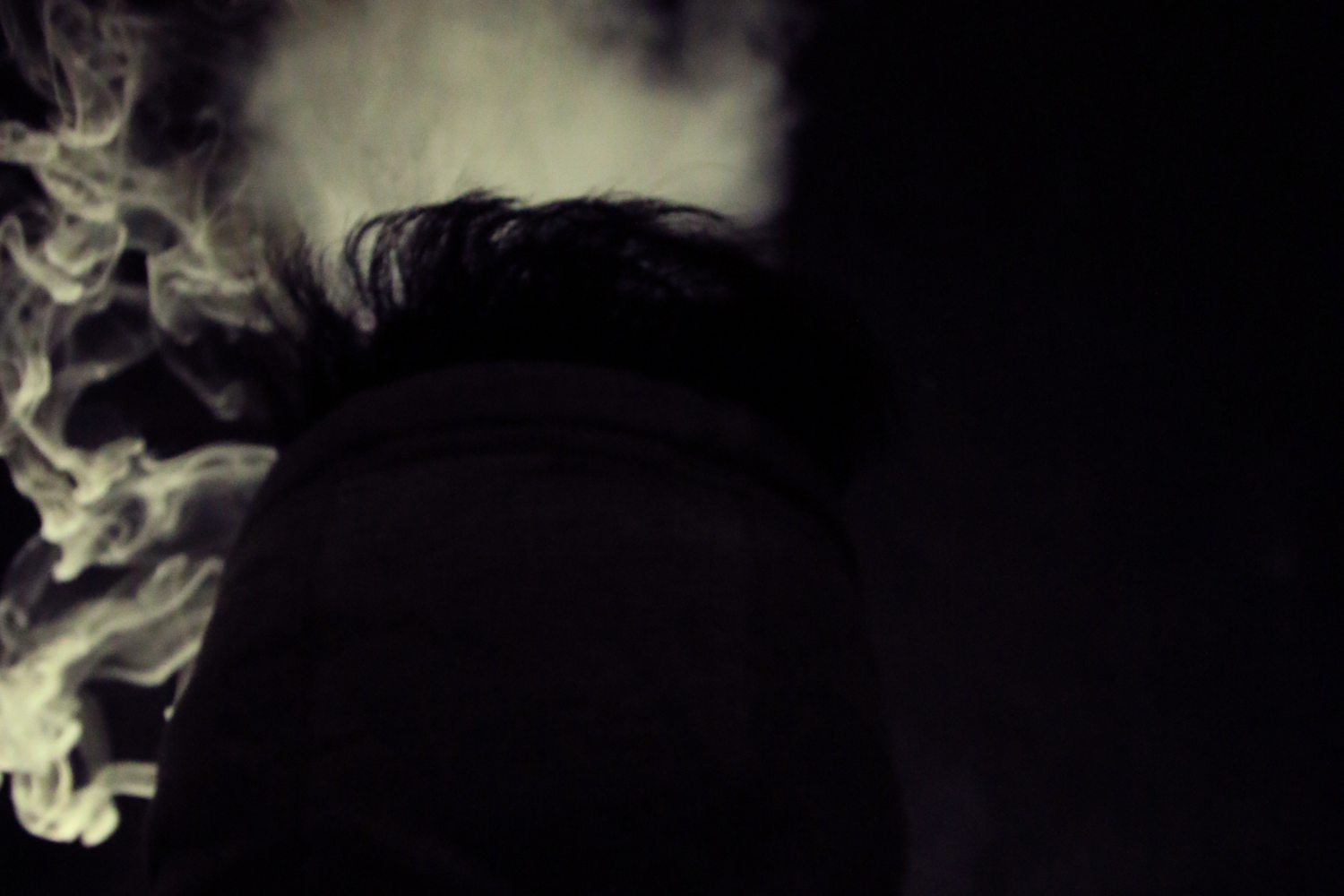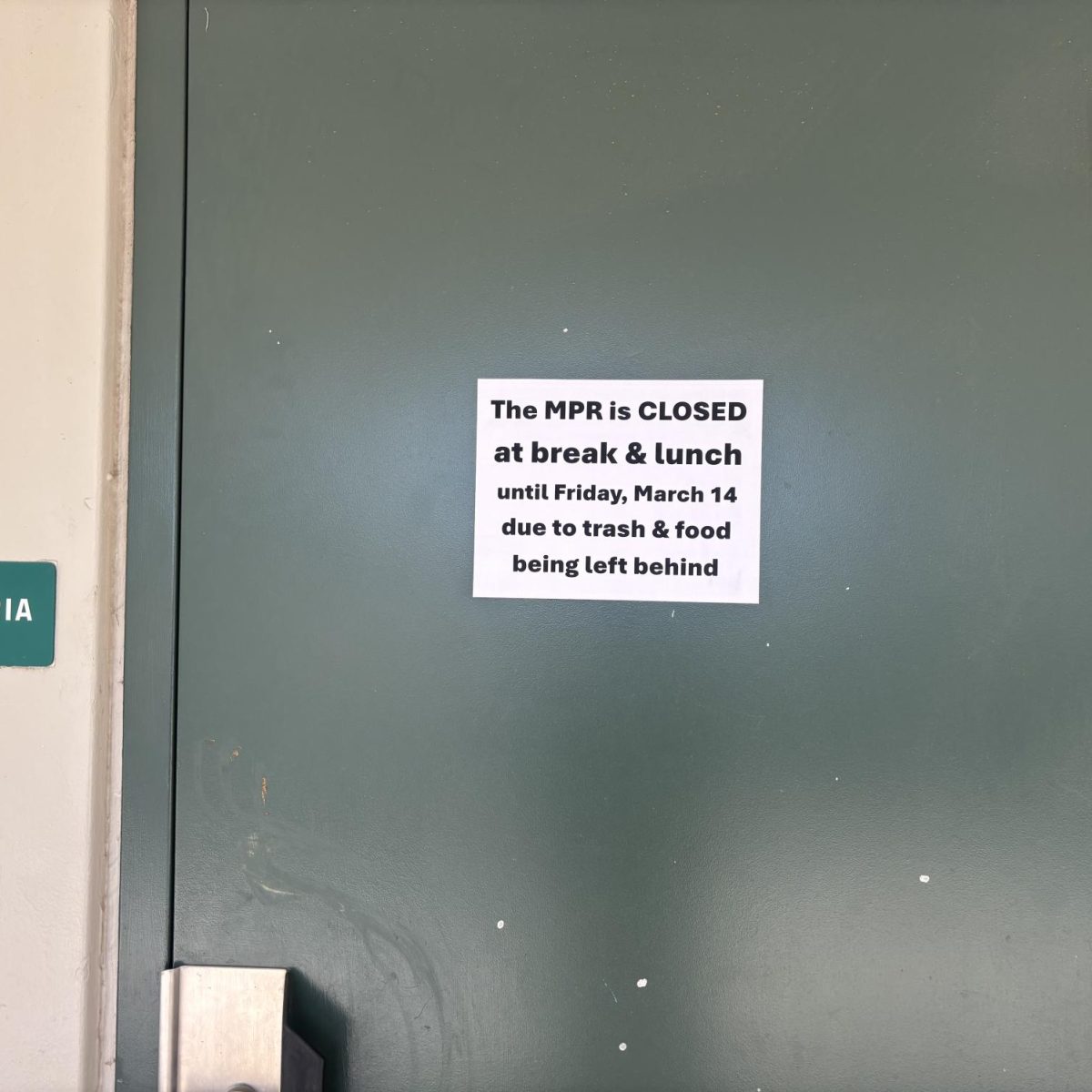The drastic increase in the possession and use of vapes over the last four years has recently caught the school’s attention. The discovery of students vaping in bathrooms and various classrooms has prompted Thousand Oaks High School to place new rules and crack down on the use of vapes. Twelve students have already been suspended this year alone.
“We’ve had some reports from students and parents that there was vaping going on in not only the restrooms but also potentially in classrooms,” Principal Lou Lichtl said. “We started investigating and looking out and we did end up with several students that were either in possession or using vapes on campus and they were disciplined accordingly. We will continue to discipline students in the same manner.”

Some vapes were found to contain 30 mg of nicotine, two-and-a-half times more than a cigarette. Students have been caught with vapes with 45 mg of nicotine as well as waxes that allow them to put illegal substances into their vape. While administration attempts to better enforce the rules, they also do so out of the concern over unknown risk factors.
“It’s really our job to enforce our rules, send a message that this is a safe place where students don’t have to be exposed to [vaping or drugs],” Lichtl said. “The dangers are also part of our concern. We don’t know what those chemicals are and in some cases how they interact with other medications or the long term effects of those chemicals going into your lungs.”
Administration adheres to the California Education Code For Student Discipline, which states that any student who possesses products that contain tobacco or nicotine will be punished by suspension and/or expulsion from an extracurricular activity for up to a year. Suspensions range from 3 to 5 days. Administration, however, views the disciplinary actions not as a punishment, but as an opportunity to help students return to the “right path.”
“We believe that it’s important for students to understand that when you break the rules or the law that there’s consequences for that,” Lichtl said. “There’s consequences but you also always have a chance to redeem yourself. The students [should] know that the consequences are not necessarily just punitive, they’re also because we’re worried about the direction they’re going in.”
Rumors have recently spread that the office will pay students who are willing to provide names or information about students in possession of vapes. Assistant Principal of Instruction Danielle Oliveri refuted this claim however, and made it clear that students will not be given any sort of reward. The only exception is if students talk to a deputy officer and an arrest is made, then a $50 reward will given to the individual.
While the school has begun to be more proactive in order to reduce vaping at school, students have begun to fight back. It is seen as a big part of school life and culture, and some students have become accustomed to smoking at school.
“I smoke a lot, but I mostly smoke with friends as it’s more fun. It’s become a social thing for me,” junior Jonathan Bennett* said. “Some people still smoke at school, just more discreetly, and I try not to anymore unless my friends are really pushing me to.”
Although the office sees the disciplinary actions as reasonable, students are upset and are worried about future repercussions it could cause.
“I think the office is taking it really far,” Bennett said. “The people who get caught and suspended will probably stop, but it’s screwing up their entire high school and college career.”
Vapes have continued to become more widespread at not only Thousand Oaks High School, but also throughout the nation. The CDC published a report in 2015 that found that 16% of students now possess vapes. This correlates to 3 million students with vapes. Less students smoke cigarettes, however, with a 7% drop from 2014.
With an increase in vape usage, there has been extensive discussion about their health effects. While all the facts aren’t yet known, harmful chemicals and correlation to nicotine addiction have been found. The Jama Network released a study on October 23, 2017, which found that out of 181 adolescents, all were more likely to use combustible cigarettes or higher concentrations of nicotine in the next 30 days. E-cigarettes can contain 5 times more nicotine than normal cigarettes; the chemicals Propylene glycol and glycerol are also widely known to be present in e-juices. More research needs to be done on these chemicals and vapes in general before e-cig’s effects can be properly determined.
“Cigarettes are being regulated by the FDA so you know what’s in the cigarette itself,” Lichtl said. “We know that a lot of the vape juice that goes into vapes have different chemicals and we have no idea what those might be.”
The US is more worried about the known carcinogens, such as diacetyl. Scientific evidence has found the chemical is in flavored juices and is known to irritate the lungs.
Furthermore, research has suggested that diacetyl can lead to chronic bronchitis. E-juice can contain metals, such as chromium and manganese, that are known to have toxic effects when heated up. The school is worried about students’ lack of knowledge about these harmful effects.
“Vapes are harmful [and] detrimental to students safety and welfare,” Lichtl said. “From a safety standpoint, we want to send a message that this is a safe place where students don’t have to be exposed to that kind of thing.”
Vaping on campus is a growing activity amongst students. The office has been working to lower the number of incidents. The rules have been met with opposition from students who feel the policy is unfair. The current discipline policy will continue to be enforced.






